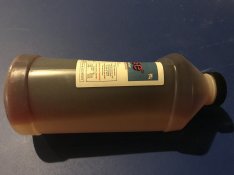A few observations concerning your test strips:
* They're pretty small and show only a small part of the negative. That makes it quite difficult to judge and dial in colors. I generally try to make strips that capture the full contrast range of the image and preferably also the most relevant (to me) areas of color in the same strip. That way I am less likely to run into the problem that I balance OK for a particular part of the scene while the rest goes out of whack. Moreover, it's easier to balance colors if you can see how different colors in the image relate to each other as opposed to trying to match a single color. Often, as I get somewhat close to what I believe is a good color balance, I will print the entire frame to see how it ends up and then make minor adjustments as needed.
* The negative you appear to be using is a bit odd; I'm referring to the unevenness and the strange striped/checkered pattern - I've never seen something like this across an image so it makes me wonder what we're looking at and how this negative was made exactly. It doesn't look like a 'typical' negative.
* A negative taken under apparently challenging lighting conditions (with not a lot of light, and possibly a light source that deviates quite a bit from daylight) can be rather difficult to finetune in terms of color. I'd start with some negatives taken under daylight and made with sufficient exposure; these are generally somewhat easier to get the hang of color balancing. It also helps if there are e.g. a grey sky and/or clouds in an image as they generally tend to be fairly close to neutral and you can color balance on those and see how the rest of the colors snap into place once you get the clouds right (this is obviously less effective if you're dealing with setting/rising sun). Alternatively, a test negative as described by
@MattKing can be very useful. This is generally a negative that contains the primary colors as well as some subtle hues that occur frequently and require careful balancing; skin tones have always been popular for this, likely because the human eye/brain is very sensitive to deviations from 'normal' in skin tones.
So in short, maybe consider printing some other (easier) negatives, and waste a little more paper on your test strips. Once you've found a good baseline for an easy negative, other negatives on the same kind of film will print well with fairly similar filter values.











 .
. 

